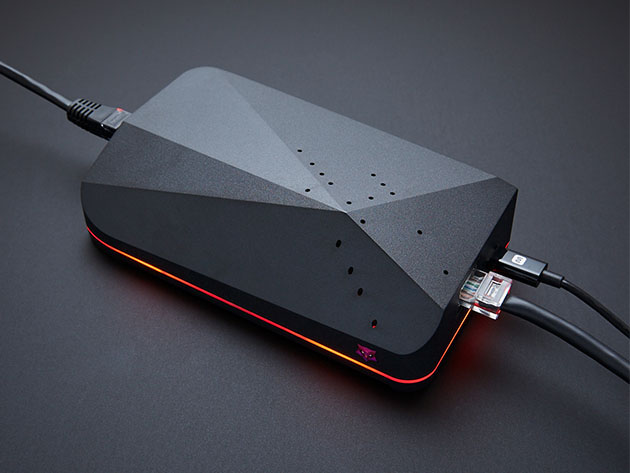With the current restrictions in place, most of us are spending more time online than usual, which means we’re producing more personal data and stand a higher chance of being targeted by hackers.
The best way to protect your personal data is to use a VPN. Setting up such services can be a hassle, but not with SYFER. This small device hooks up to your home Wi-Fi network to provide instant protection — including a robust firewall. It raised over $745k on Indiegogo, and you can get it now for $169.99 at the XDA Developers Depot.
https://www.youtube.com/embed/O0BtHmXFxfA
According to ProPublica, Facebook collects 52,000 data points about every user. You can see how much Google knows about you by visiting this link; the results can be scary. Many other sites collect similar amounts of personal data.
SYFER helps you get back your privacy. By connecting this box to your router, you turn on private, encrypted browsing for every device on your home network.
The SYFER VPN Router works alongside your existing Wi-Fi router and modem. To get started, you simply plug in the box using the provided Ethernet cable.
The VPN protection provided by SYFER is fast and unlimited, with connection speeds up to 100Mbps. This means you can browse as normal and enjoy content on streaming sites, including Netflix, Hulu, and Amazon Prime. All the while, SYFER will silently block targeted ads.
In addition, SYFER aims to protect you from cybersecurity threats. The VPN Router has a firewall powered by artificial intelligence and machine learning, which can detect malware, hackers, and botnets. It covers key devices around your home, such as baby monitors, home cameras, and security systems.
Parents can even protect their kids with SYFER. The device offers a range of parental controls, including tools to enforce Google Safe Search.
The SYFER VPN Router comes with one year of unlimited service. After that, you pay only $9.99 to continue the protection. It’s easy to set up, and the system needs no ongoing maintenance.
SYFER normally retails for $199, but you can currently pick up the VPN Router with one year of service for just $169.99.
Prices subject to change
The post Instantly Secure Your Entire Home Network With This VPN Router appeared first on xda-developers.
from xda-developers https://ift.tt/2WT7tGc
via IFTTT












